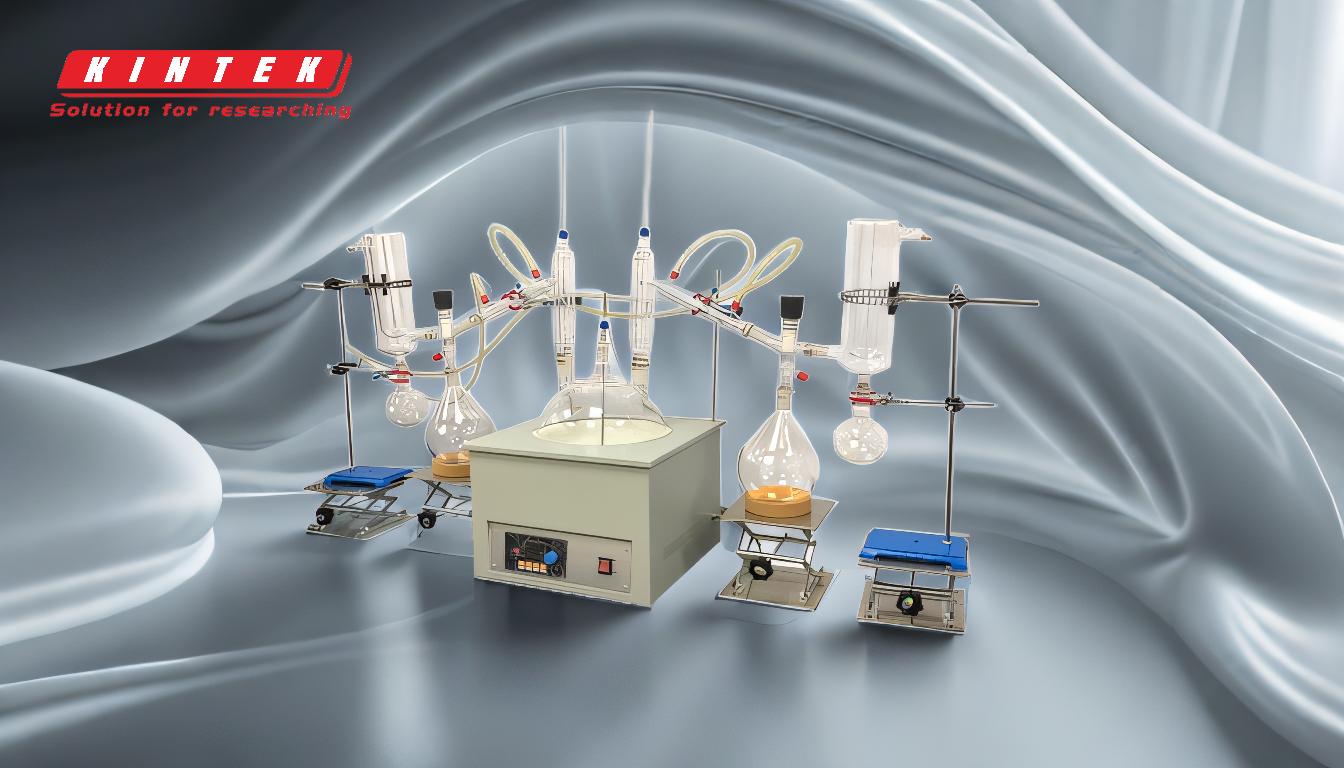Vacuum distillation and simple distillation are both separation techniques used to purify liquids based on their boiling points, but they differ significantly in their operating conditions, applications, and efficiency. Vacuum distillation operates under reduced pressure, which lowers the boiling points of the components, making it suitable for heat-sensitive materials and close-boiling mixtures. Simple distillation, on the other hand, operates at atmospheric pressure and is typically used for separating liquids with significantly different boiling points. The choice between the two methods depends on the nature of the mixture, the desired purity, and the scale of operation.
Key Points Explained:

-
Operating Pressure:
- Vacuum Distillation: Operates under reduced pressure, which lowers the boiling points of the components. This is particularly useful for separating heat-sensitive materials or close-boiling mixtures that would otherwise require very high temperatures.
- Simple Distillation: Operates at atmospheric pressure, making it suitable for separating liquids with significantly different boiling points. It is less effective for close-boiling mixtures or heat-sensitive materials.
-
Temperature Requirements:
- Vacuum Distillation: Lower temperatures are required due to the reduced pressure, which helps prevent thermal degradation of sensitive compounds.
- Simple Distillation: Higher temperatures are needed since the process occurs at atmospheric pressure, which can lead to the degradation of heat-sensitive materials.
-
Applications:
- Vacuum Distillation: Commonly used in industrial processes such as desalination, petroleum refining, and the purification of heat-sensitive chemicals. It is also used in laboratories for the separation of compounds that decompose at high temperatures.
- Simple Distillation: Typically used in laboratories for purifying solvents or separating liquids with large differences in boiling points. It is less common in industrial settings due to its limitations with close-boiling mixtures.
-
Efficiency and Purity:
- Vacuum Distillation: Offers higher efficiency in separating close-boiling mixtures and can achieve higher purity levels due to the reduced risk of thermal degradation.
- Simple Distillation: Less efficient for close-boiling mixtures and may not achieve the same level of purity, especially for heat-sensitive materials.
-
Equipment and Cost:
- Vacuum Distillation: Requires specialized equipment to maintain reduced pressure, which can increase both capital and operating costs. However, it can reduce the overall cost by decreasing the height and diameter of distillation columns in industrial settings.
- Simple Distillation: Uses simpler equipment and is generally less expensive to operate, but it may not be suitable for all types of mixtures, particularly those requiring high purity or involving heat-sensitive materials.
-
Scale of Operation:
- Vacuum Distillation: Often used in large-scale industrial processes where continuous operation and high efficiency are required. It is also used in laboratories for small-scale separations of sensitive compounds.
- Simple Distillation: More commonly used in laboratory settings for batch processing, though it can be scaled up for industrial use in certain applications.
-
Product Recovery:
- Vacuum Distillation: The distillate (the collected solvent) is typically the desired product, especially in processes like desalination where the goal is to obtain pure water.
- Simple Distillation: The distillate is also the desired product, but the process is less effective for recovering highly pure or heat-sensitive compounds.
In summary, vacuum distillation is a more advanced and versatile technique that is particularly useful for separating close-boiling mixtures and heat-sensitive materials. It operates under reduced pressure, which lowers the boiling points and reduces the risk of thermal degradation. Simple distillation, on the other hand, is a more straightforward method suitable for separating liquids with significantly different boiling points but is less effective for complex or sensitive mixtures. The choice between the two methods depends on the specific requirements of the separation process, including the nature of the mixture, the desired purity, and the scale of operation.
Summary Table:
| Aspect | Vacuum Distillation | Simple Distillation |
|---|---|---|
| Operating Pressure | Reduced pressure, lowers boiling points | Atmospheric pressure |
| Temperature | Lower temperatures, prevents thermal degradation | Higher temperatures, risk of thermal degradation |
| Applications | Industrial (desalination, petroleum refining) and lab use for heat-sensitive compounds | Lab use for solvents or liquids with large boiling point differences |
| Efficiency & Purity | High efficiency for close-boiling mixtures, higher purity | Less efficient for close-boiling mixtures, lower purity for heat-sensitive materials |
| Equipment & Cost | Specialized equipment, higher costs | Simpler equipment, lower costs |
| Scale of Operation | Large-scale industrial and small-scale lab use | Primarily lab use, limited industrial application |
| Product Recovery | Distillate is the desired product (e.g., pure water) | Distillate is the desired product, less effective for sensitive compounds |
Need help choosing the right distillation method for your application? Contact our experts today!












